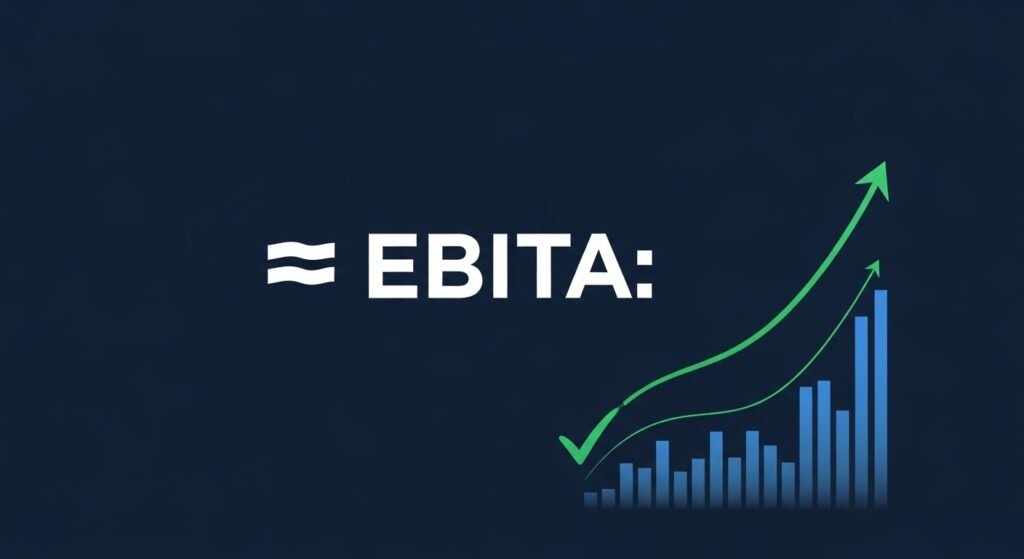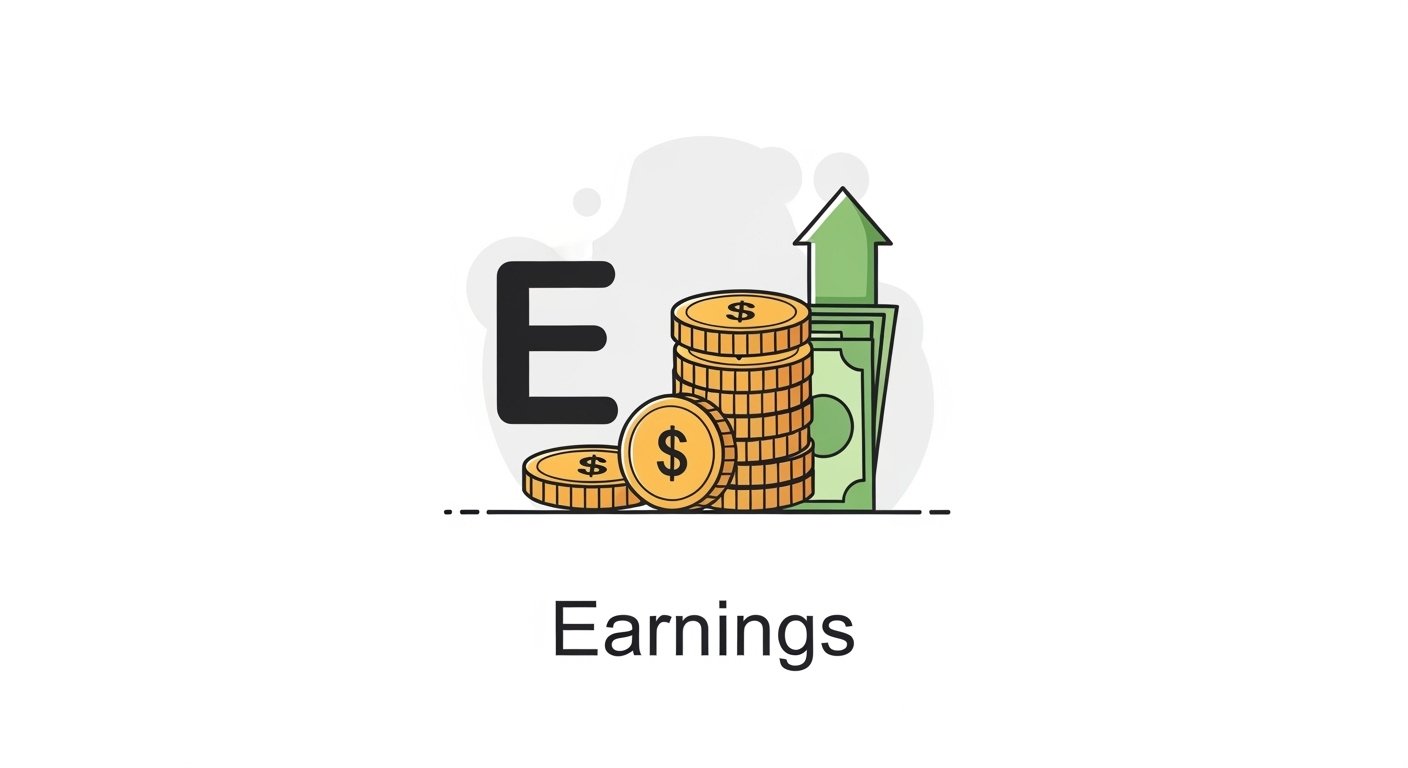If you’ve ever heard someone talk about business profits or company performance, there’s a good chance you’ve heard words like EBITDA or EBITA thrown around. At first, it might sound like a bunch of letters with no clear meaning. But once you break it down, it’s not so hard to understand. In this friendly guide, we’ll focus on what EBITA meaning really is, why it matters, and how it helps business owners, investors, and even students understand how a company is doing financially. Whether you’re running your own business or just trying to learn more about finance, knowing the meaning of EBITA can help you make smarter decisions.
By the end of this simple yet deep dive, you’ll not only know what EBITA meaning stands for—you’ll also know how it’s different from similar terms, how to calculate it, when to use it, and why many business experts pay attention to it. Don’t worry, we’ll keep every explanation easy to understand, even if you’re new to business and finance. Let’s get started with the basics and build up your knowledge, one step at a time.
What Does EBITA Mean?
EBITA meaning is “Earnings Before Interest, Taxes, and Amortization.” In simple words, it tells you how much profit a business makes before subtracting some specific costs. These costs—interest, taxes, and amortization—can change a lot depending on loans, taxes, or other non-cash items. EBITA focuses more on how the business itself is performing, without being distracted by things that may not be related to everyday operations. If a company is earning good money before paying interest, tax, or accounting for long-term value losses, that’s a strong sign to many investors.
Breaking Down the Acronym: E-B-I-T-A
Let’s take a moment to understand each part of EBITA meaning. E stands for earnings, which is just another word for profit. B is before, so you know everything after hasn’t been subtracted yet. I means interest—like money borrowed or owed on loans. T is for taxes—what the company pays to the government. A is amortization—the cost spread out over time for intangible things like brand name value or software. When you add it all together, you get a number that shows real business strength, leaving out stuff that can confuse the big picture.
EBITA vs EBITDA: What’s the Difference?
Many people confuse EBITA meaning with EBITDA, which stands for “Earnings Before Interest, Taxes, Depreciation, and Amortization.” Yes, the only difference is the “D,” which is depreciation. Depreciation looks at the declining value of physical things like machines and tools. Amortization does the same thing for non-physical things, like patents or brand names. So EBITDA removes more items than EBITA does. This makes EBITDA a little higher in most cases. EBITA is a bit more focused because it leaves depreciation in the mix, which can matter a lot in some industries.
When Do Companies Use EBITA?
EBITA meaning becomes really important when companies want to understand or show their true operating profits. Businesses use EBITA when they want to strip away expenses that don’t reflect their basic day-to-day performance. For example, if a company has big interest payments from a loan, that might make their profits look smaller. But by using EBITA, they can show how their business would perform without that debt. It’s also useful in industries where amortization is complex or not very relevant. Many small businesses, tech startups, and manufacturing firms use EBITA to explain their growth and profit potential.
Why EBITA is Useful for Investors
Investors care about EBITA meaning because it helps them see how healthy a business really is. Let’s say two companies both make $1 million in revenue. One pays huge taxes and has big debts, so their actual profit looks smaller. The other doesn’t. If you just looked at net profit, you’d say the first company was doing worse. But if EBITA is strong for both, it shows both can earn money and grow if their costs are managed differently. EBITA pulls away the noise and shows how good the business is at making money through its core services or products.
How to Calculate EBITA
To calculate EBITA, you start with net income (also called net profit). That’s what a company earns after all costs. Then, you add back three things: interest, taxes, and amortization. Here’s the simple math formula:
EBITA = Net Income + Interest + Taxes + Amortization
For example, if a company has $500,000 in net profit, pays $50,000 in interest, $100,000 in taxes, and $25,000 in amortization, the EBITA is:
$500,000 + $50,000 + $100,000 + $25,000 = $675,000
That final number is a clearer look at how much profit is made before those extra costs weigh it down.
What is Amortization in EBITA?

One important part of EBITA meaning is amortization, but what does that really mean? Amortization spreads the cost of something over time. It’s mostly used for things you can’t see or touch—like software, copyrights, or brand names. Let’s say your company pays $100,000 for a license that lasts 10 years. Instead of recording that full cost in one year, you would show $10,000 per year as an expense. Amortization helps balance accounting records over time. Since it’s a non-cash cost, removing it for EBITA gives a clearer picture of actual cash profit.
Real-Life Example of EBITA
Let’s say there’s a company that sells athletic shoes. Each year, it brings in $5 million in sales. After paying for materials, workers, and rent, the company ends the year with $800,000 in net income. But the company also pays $100,000 in interest on a business loan, $200,000 in taxes, and $50,000 in amortization for marketing rights. The EBITA meaning in this case shows us this:
EBITA = $800,000 + $100,000 + $200,000 + $50,000 = $1,150,000
Even though the final net profit is $800,000, the business really made over $1.1 million before interest, taxes, and amortization were added in.
Limitations of EBITA
While EBITA meaning is helpful, it’s not perfect. Some business experts warn not to rely only on EBITA to judge a company’s health. Why? It doesn’t include all costs. Because it leaves out things like interest and taxes, you might not see the full debt picture or real cash impact. Companies might talk about strong EBITA numbers, even if they’re struggling with other financial problems. It’s just one tool, not the whole toolbox. Always use it with other metrics like cash flow, total debt, or net income for a better understanding of what’s going on.
How EBITA Helps in Buying or Selling Businesses
If you’ve ever thought about buying a business, understanding EBITA meaning is key. Buyers want to know how much money the company is bringing in without extra noise. EBITA helps show the strength of core operations. It also helps set a fair price. Many business valuations are based on multiples of EBITA. For example, a business might sell for 5 times its EBITA. If the EBITA is $2 million, the company might be worth $10 million. It works the same for selling too—higher EBITA often means a stronger asking price.
Using EBITA to Measure Company Growth
Many growing companies like to show off their EBITA improvements over time. This shows how their profit from business activities is improving year after year. For example, if your company had $700,000 EBITA last year and reaches $900,000 this year, that’s clear growth—even if taxes or other one-time costs slow down your net income. Using EBITA shows investors and owners how well the core parts of a business—like sales, processes, and spending—are moving in the right direction. Tracking EBITA regularly helps business leaders make smart changes that fuel steady growth.
Tools and Software That Help Track EBITA
Managing numbers and comparing performance means you need good tools. Many accounting apps can help track EBITA, or at least give you the numbers you need to calculate it. Tools like QuickBooks, Xero, and FreshBooks show earnings, interest expenses, and taxes clearly. You can then use a calculator or spreadsheet to work out your EBITA. There are also finance dashboards and business performance platforms made just for investors or finance teams. If you have an accountant or CFO, they likely already use EBITA as one of their go-to financial checks.
FAQs
1. What does EBITA mean in simple words?
EBITA stands for earnings before interest, taxes, and amortization. It shows how much a business earns before those extra costs are applied.
2. How is EBITA different from EBITDA?
EBITDA includes depreciation and amortization, while EBITA includes only amortization. EBITDA removes more expenses, so it’s usually higher.
3. Why is EBITA important for investors?
EBITA helps investors see how well a company performs in its regular business without outside costs like loans and taxes.
4. Can EBITA be negative?
Yes, if a company loses more money than it earns before paying interest, taxes, and amortization, EBITA can be negative.
5. Who uses EBITA most—small businesses or big corporations?
Both small and large companies use EBITA. It’s helpful for comparing company performance regardless of size or debt level.
6. Is EBITA shown on income statements?
Not always. Some companies show EBITA directly; others require you to calculate it using net income and extra details.
Final Thoughts
Understanding EBITA meaning is more than learning a financial alphabet soup—it’s about seeing how strong a business really is. Whether you’re running your own company, working in business school, or exploring stock investments, EBITA helps you cut through the confusion and focus on real company performance. It’s an important part of smart decision-making and adds clarity to the basics of profit and loss. Remember, like all financial tools, EBITA works best when used along with other numbers and facts. But once you learn how to use it, you’ll feel more confident reading company reports, planning growth, or comparing businesses. So take what you’ve learned and try using EBITA in your next business review or project—you’ll be glad you did.






